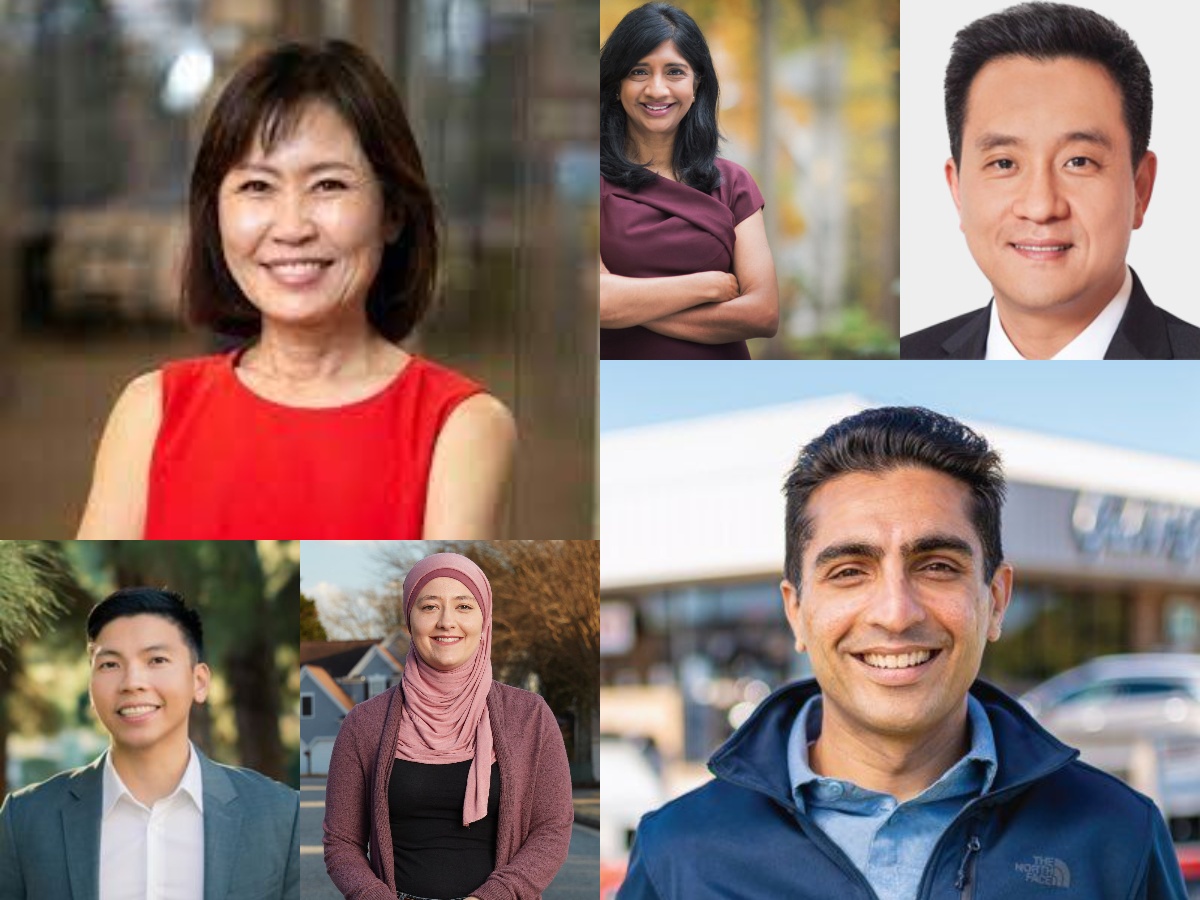More Than Representation: Achieving Accurate Portrayals Of Asian And Asian American Experiences In Media

Table of Contents
The Perils of Stereotypes and the Bamboo Ceiling
The media landscape is rife with harmful stereotypes that limit and distort our understanding of Asian and Asian American individuals. These damaging portrayals often reinforce the status quo and prevent authentic representation from flourishing.
Common Harmful Stereotypes:
-
The Model Minority Myth: This stereotype paints all Asians and Asian Americans as inherently intelligent, hardworking, and successful, ignoring the vast diversity of socioeconomic backgrounds and experiences within these communities. It sets unrealistic expectations and can lead to internalized pressure and feelings of inadequacy.
- Examples: The overrepresentation of Asians in STEM fields in media without acknowledging the struggles and systemic barriers faced.
- Negative Impact: Creates pressure to conform, ignores struggles with poverty and discrimination, and fuels inter-ethnic tensions.
-
The Submissive Asian Woman: This deeply rooted stereotype portrays Asian women as docile, subservient, and hyper-sexualized, reducing them to objects of desire and stripping them of their agency.
- Examples: The portrayal of Asian women as exotic “dragon ladies” or demure, silent figures in service to male characters.
- Negative Impact: Perpetuates harmful gender stereotypes, contributes to fetishization, and limits opportunities for Asian women in leadership roles.
-
The Emasculated Asian Man: This stereotype depicts Asian men as effeminate, nerdy, or asexual, undermining their masculinity and reducing their complexity.
- Examples: The portrayal of Asian men as sidekicks, comic relief, or perpetually struggling with their identity.
- Negative Impact: Reinforces negative perceptions of Asian men, affecting their self-esteem and social interactions.
-
The Perpetually Foreign Other: This stereotype casts Asians and Asian Americans as perpetually foreign, unable to fully assimilate into American society, regardless of their citizenship status or generational history in the country.
- Examples: Characters with heavy accents, perpetual outsider status, and lack of cultural integration.
- Negative Impact: Creates a sense of otherness and alienates Asian Americans from mainstream society.
Breaking the Bamboo Ceiling:
Beyond the onscreen representation, the lack of Asian and Asian American voices behind the camera significantly contributes to inaccurate storytelling. The "bamboo ceiling" – the invisible barrier preventing Asian and Asian American individuals from reaching leadership positions in the media industry – needs to be shattered.
- Statistics: Studies consistently show a stark underrepresentation of Asians and Asian Americans in directing, writing, and producing roles.
- Initiatives: Organizations like the Asian American Journalists Association (AAJA) and initiatives focusing on diversity and inclusion in media are crucial in addressing this imbalance.
Beyond the Single Story: The Importance of Nuance and Complexity
The diversity within Asian and Asian American communities is staggering. Ignoring this vast spectrum of nationalities, ethnicities, religions, socio-economic backgrounds, sexual orientations, and more results in a single, reductive narrative.
Exploring Diverse Identities:
To achieve accurate portrayals, we must explore the myriad experiences within these communities.
- Diverse Stories: The narratives of LGBTQ+ Asian Americans, first-generation immigrants, refugees, working-class families, and individuals with disabilities need to be centered.
- Intersectionality: Recognizing how multiple identities intersect (e.g., being a Black Asian woman) and understanding how these intersections shape lived experiences is paramount.
Authentic Storytelling and Collaboration:
Authenticity demands collaboration. Including Asian and Asian American writers, directors, actors, and community members throughout the creative process is non-negotiable.
- Successful Collaborations: Many films and television shows have achieved powerful and impactful portrayals through genuine collaboration with the communities they represent.
- Best Practices: Inclusive casting, sensitivity readings, and consulting with cultural experts are crucial steps towards achieving authentic representation.
The Power of Positive Representation and its Impact
Positive representation doesn’t simply mean avoiding stereotypes; it actively challenges them and promotes positive self-image and cross-cultural understanding.
Countering Negative Narratives:
Positive portrayals can counteract the harmful effects of negative stereotypes.
- Positive Examples: Shows and films featuring diverse Asian and Asian American characters in complex and relatable roles can help challenge harmful stereotypes.
- Psychological Impact: Positive representation can boost self-esteem and promote a stronger sense of identity among young Asian and Asian American audiences.
Promoting Understanding and Empathy:
Accurate portrayals foster empathy and understanding among broader audiences.
- Cross-Cultural Understanding: Media can play a powerful role in bridging cultural divides and promoting tolerance.
- Combating Prejudice: By showcasing the humanity and complexity of Asian and Asian American experiences, media can help combat prejudice and discrimination.
Conclusion
Achieving accurate portrayals of Asian and Asian American experiences in media requires a conscious and sustained effort to move beyond superficial representation. This means acknowledging and dismantling harmful stereotypes, embracing the diversity within these communities, and prioritizing authentic storytelling through genuine collaboration. The power of positive representation cannot be understated; it fosters positive self-image, promotes understanding, and counters harmful narratives. Let's demand and support media that offers nuanced and complex portrayals of Asian and Asian American lives. Let's actively participate in creating a media landscape that truly reflects the richness and diversity of these communities. Let's champion accurate portrayals and ensure the experiences of Asian and Asian Americans are reflected honestly and authentically.

Featured Posts
-
 Ufc 315 Fight Card Preview Everything You Need To Know
May 12, 2025
Ufc 315 Fight Card Preview Everything You Need To Know
May 12, 2025 -
 Lily Collins Calvin Kleins New Face
May 12, 2025
Lily Collins Calvin Kleins New Face
May 12, 2025 -
 Teen Moms Impact Farrah Abrahams Life After The Show
May 12, 2025
Teen Moms Impact Farrah Abrahams Life After The Show
May 12, 2025 -
 First Of Its Kind 10 Year Accord Signed Between Ottawa And Indigenous Community
May 12, 2025
First Of Its Kind 10 Year Accord Signed Between Ottawa And Indigenous Community
May 12, 2025 -
 Gomez And Blanco Addressing Recent Infidelity Speculation
May 12, 2025
Gomez And Blanco Addressing Recent Infidelity Speculation
May 12, 2025
Latest Posts
-
 Future Of Mtv Movie And Tv Awards Uncertain After 2025 Cancellation
May 12, 2025
Future Of Mtv Movie And Tv Awards Uncertain After 2025 Cancellation
May 12, 2025 -
 The Challenge 41 Which Fan Favorite Was Eliminated
May 12, 2025
The Challenge 41 Which Fan Favorite Was Eliminated
May 12, 2025 -
 Mtv Cribs Comparing The Homes Of Todays Wealthy Youth To Past Generations
May 12, 2025
Mtv Cribs Comparing The Homes Of Todays Wealthy Youth To Past Generations
May 12, 2025 -
 Rich Kids Cribs A Tour Of Opulence And Excess On Mtv
May 12, 2025
Rich Kids Cribs A Tour Of Opulence And Excess On Mtv
May 12, 2025 -
 Ru Pauls Drag Race S17 E13 Preview A Family Affair Drag Baby Mamas
May 12, 2025
Ru Pauls Drag Race S17 E13 Preview A Family Affair Drag Baby Mamas
May 12, 2025
